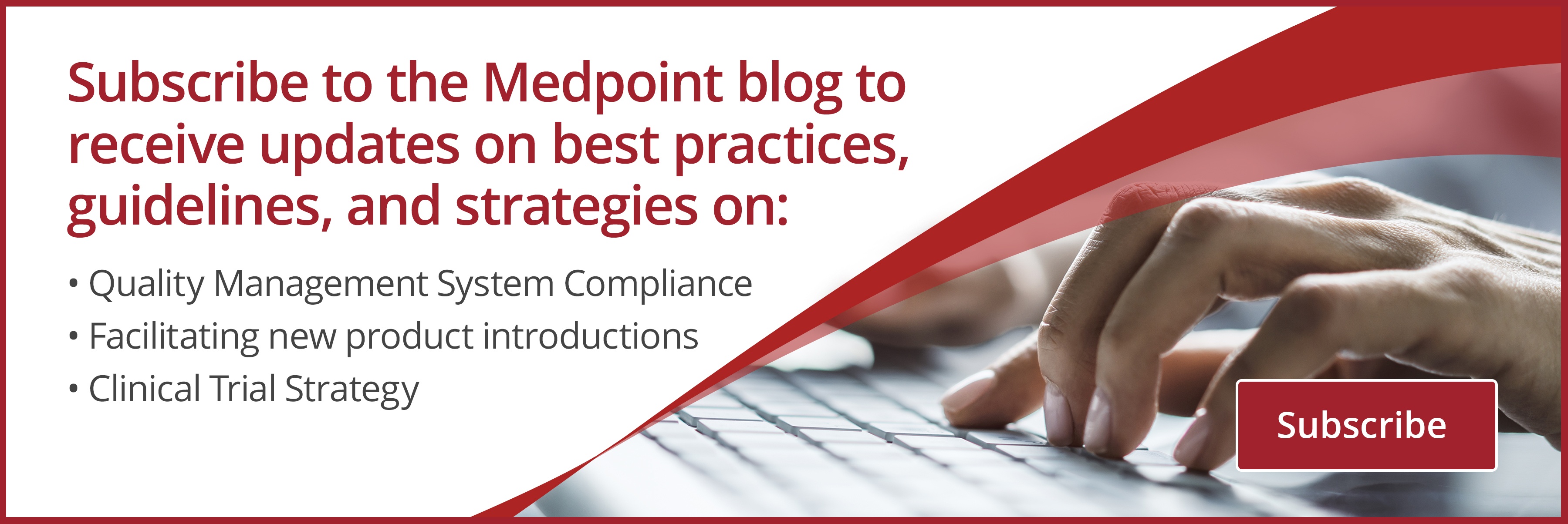GREENVILLE, S.C. July 13, 2023 | Medpoint, LLC, experts in Quality Assurance, Medical Regulatory...
How to Optimize Your CAPA Escalation Process
In 2020, the most common reason for FDA's 483 observation letters was "procedures for corrective and preventative actions have not been [adequately] established." (1)
Problems with a company's CAPA system usually stem from the following issues:
- Employees don't follow CAPA procedures.
- CAPA system isn't compliant with regulatory requirements.
- There is a lack of well-defined, documented procedures for CAPA.
One of the main CAPA-related problem areas is a poorly defined or ineffective escalation process. Without a clear escalation procedure, employees can't follow the CAPA process correctly and management oversight of the CAPA process is lacking, thus affecting regulatory compliance.
By optimizing the escalation process criteria, a company can ensure compliance to the FDA regulations and international regulatory standards and set up an efficient system for correction and prevention of systemic non-conformities.
To get a better idea of how to optimize the CAPA escalation process, it's important to learn what the CAPA process entails.
What is CAPA?
The CAPA system is designed to identify problems, understand the underlying causes, resolve issues, and take corrective actions to prevent these issues from happening in the future. The purpose of CAPA is to address non-conformities.
The system consists of the following elements (2):
- Corrective actions – actions taken to eliminate the cause of the discovered non-conformity.
- Preventive actions – actions taken to prevent the recurrence of non-conformities.
It's important to understand the difference between corrective and correction procedures. The latter is the set of actions taken to eliminate the discovered non-conformity without going deeper to discover its cause.
Not all corrective actions must be followed by preventive actions while not all preventive actions are based on corrective actions or correction procedures.
A company must have a well-documented procedure to ensure a smooth CAPA process. FDA always checks CAPA records and documentation during routine inspections.
What is the CAPA escalation process?
The CAPA escalation process is the process that decides whether or not a non-conformity or deviation requires a CAPA to be opened. It is also known as "triggering" a CAPA or the "threshold" at which a CAPA should be started.
Not all non-conformities are escalated to CAPA. Some of them can be resolved by correction procedures instead of corrective actions. The decision to escalate non-conformities to a CAPA is based on the CAPA escalation process' criteria.
Why is the CAPA escalation process important?
A lack of a clear definition of the CAPA escalation criteria can cause two serious problems:
- Overuse - escalating all non-conformities to CAPA would overwhelm the organization with minor problems, focusing the staff's attention away from major issues. Additionally, it could force employees to rush through CAPAs in order to complete all procedures in time, thus missing important problems.
- Underuse – failing to escalate major non-conformities to CAPA, could result in a Form 483 letter during the next FDA inspection and/or poor quality product delivered to the customer. The lack of timely preventive measures could lead to recurring problems and additional warnings during FDA inspections.
In both cases, the organization's quality management suffers, which reflects on the product quality, regulatory compliance, and company reputation.
How can you optimize your CAPA escalation process?
To ensure a transparent and effective CAPA escalation process, you can optimize it by following several simple rules.
Apply Corrections When Possible
Some non-conformities don’t require corrective actions. You can solve them with a correction procedure and go on to working with other aspects of quality management.
Unlike corrections, corrective actions are typically required if the problem is systematic. In this case, you need to look for the root of the problem and eliminate it. If the issue is a one-time problem, it can usually be corrected without initiating a CAPA.
Qualitative Risk Acceptability Matrix
Employees should have clear guidelines telling them which types of non-conformities require CAPA escalation. They can be established by using a qualitative risk acceptability matrix. When in doubt, engage your quality assurance representative for assistance.
Risk is a combination of the harm's intensity and its probability of occurrence. To create a matrix, you need to explicitly describe the non-conformity traits, which are serious enough to warrant a CAPA process, including their severity and occurrence frequency.
Prioritize Preventive Actions by Difficulty
To ensure compliance, CAPA the escalation process should be properly documented not just in the CAPA SOP but in other SOPs describing processes that could “trigger” a CAPA (e.g., non-conformances, complaints, etc.). When determining which preventive actions need your attention first, you can prioritize them by several factors:
- Seriousness – the degree of the problem's severity with the consideration of the negative impact of failing to address it.
- Time – the degree of urgency when addressing the problem with the consideration of the likeliness of it worsening.
- Extent – the degree of impact on other elements of your quality management process.
- Difficulty – the degree of difficulty when implementing preventive measures.
If two potential non-conformities come with equal risks, start with the one that takes less work to solve first. This way you can prevent worsening of one problem instead of suffering the consequences of both while working on the time-consuming issue.
Open a CAPA for Your CAPA
To minimize the risk of FDA 483 findings, it is important to streamline your CAPA escalation process. You can do it by establishing corrective and preventive actions for your CAPA system. Evaluate your CAPA escalation process for weaknesses and figure out which actions need to be taken to keep it in top shape.
You are more likely to find potential non-conformance to procedures than existing ones. By optimizing your CAPA escalation process with corrective and preventive actions, it's possible to catch problems before they lead to issues that warrant the FDA's attention.
The questions to ask before opening a CAPA for your CAPA are:
- How long did it take to complete the CAPA?
- Did the completion date go past the deadline? If yes, why?
- Did the CAPA ultimately address the issue?
If your CAPA escalation procedures aren't yielding satisfactory results, consider evaluating their integrity and taking corrective/preventive actions.
The Takeaway
The CAPA escalation process requires your close attention since it can mean a difference between a properly functional CAPA system and the FDA's warnings. Optimizing the CAPA escalation process is integral to regulatory compliance and addressing product problems in a timely manner.
Optimization procedures for your CAPA escalation process must be documented just like the rest of the CAPA process. Otherwise, they won't be in compliance, thus becoming useless for quality maintenance and regulatory compliance purposes.
Would you like to learn more about CAPA escalation process optimization? Subscribe to our blog today.




